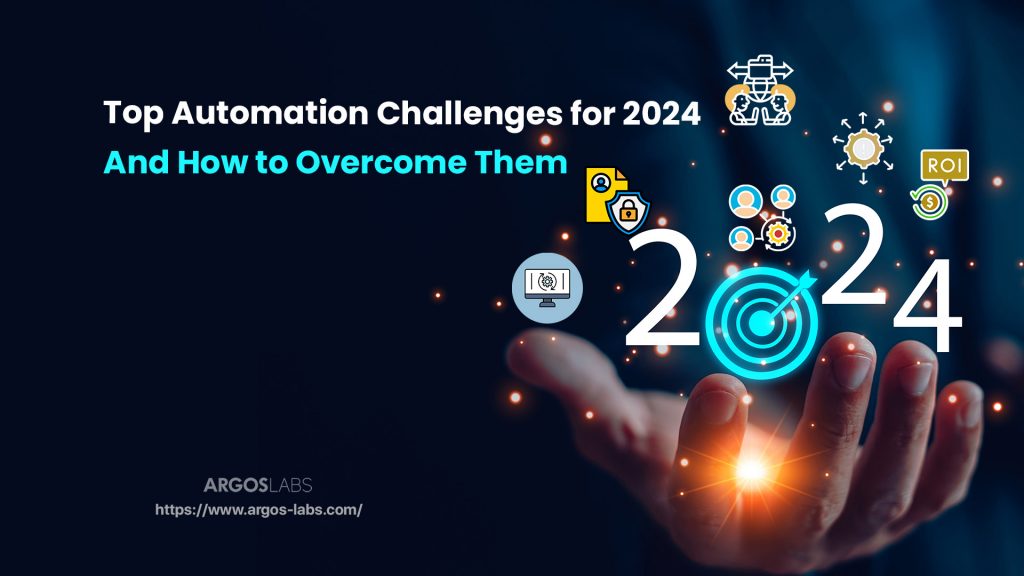
As we progress through 2024, automation continues to reshape industries, driving efficiency and innovation. However, this rapid evolution brings its own set of challenges. Understanding and addressing these hurdles is crucial for organizations aiming to leverage automation effectively. Based on insights from Forbes, here’s a look at the top automation challenges for 2024 and strategies to mitigate them.
1. Integration Complexity
One of the most significant challenges in automation is integrating new systems with existing technologies. Many organizations struggle with ensuring that automation tools work seamlessly with their legacy systems. This complexity can lead to disruptions and inefficiencies if not managed properly.
Mitigation Strategy
To address integration issues, organizations should prioritize choosing automation solutions that offer robust integration capabilities. Investing in platforms with pre-built connectors and APIs can
simplify the integration process. Additionally, adopting a phased approach—starting with smaller, less critical systems—can help identify potential issues before a full-scale rollout.
2. Data Security and Privacy
As automation tools handle vast amounts of data, ensuring the security and privacy of this information is paramount. The risk of data breaches and unauthorized access increases with the complexity of automation systems. Organizations must comply with stringent data protection regulations to avoid legal and financial repercussions.
Mitigation Strategy
Implementing strong security protocols and regular audits is essential. This includes encrypting data, employing access controls, and ensuring that automation tools adhere to industry standards for data protection. Additionally, educating employees about data security best practices can further enhance your organization’s defenses against cyber threats.
3. Skill Gaps and Workforce Displacement
Automation often requires specialized skills that may not be readily available within the existing workforce. This skill gap can hinder the successful implementation of automation initiatives. Furthermore, concerns about workforce displacement due to automation can affect employee morale and lead to resistance.
Mitigation Strategy
To bridge the skill gap, organizations should invest in training and development programs. Upskilling existing employees to manage and maintain automation systems can reduce dependency on external resources. Additionally, clear communication about how automation will enhance rather than replace jobs can help mitigate fears and foster a positive attitude towards technological change.
4. Change Management Challenges
Implementing automation often necessitates significant changes in business processes and workflows. Managing these changes effectively is crucial to ensure smooth adoption and minimize disruption. Resistance to change from employees can pose a major challenge.
Mitigation Strategy
A comprehensive change management plan is essential. This should include clear communication about the benefits of automation, involvement of key stakeholders in the planning process, and support mechanisms to help employees transition to new ways of working. Providing ongoing support and feedback channels can also help address concerns and facilitate a smoother change process.
5. Scalability Issues
As organizations grow, their automation needs can evolve. Ensuring that automation solutions can scale effectively to meet increasing demands is a significant challenge. Failure to address scalability can lead to performance bottlenecks and reduced effectiveness of automation tools.
Mitigation Strategy
Choosing automation solutions that are designed with scalability in mind is crucial. Cloud-based platforms often offer greater flexibility and scalability compared to on-premises solutions. Additionally, regularly reviewing and updating automation strategies to align with business growth can help ensure that systems continue to meet evolving needs.
6. ROI Measurement and Justification
Demonstrating the return on investment (ROI) from automation initiatives can be challenging. Organizations must be able to measure and justify the value delivered by automation to secure ongoing support and investment.
Mitigation Strategy
Establishing clear metrics and KPIs for automation projects from the outset is essential. Regularly tracking performance against these metrics can provide tangible evidence of ROI. Additionally, leveraging case studies and industry benchmarks can help justify automation investments and demonstrate their value to stakeholders.
Conclusion
While automation presents numerous opportunities for enhancing efficiency and innovation, it also introduces challenges that must be addressed to achieve successful outcomes. By focusing on integration, data security, skill development, change management, scalability, and ROI measurement, organizations can navigate these hurdles effectively. Embracing these strategies will not only mitigate risks but also maximize the benefits of automation, positioning businesses for success in 2024 and beyond.
For more information on how Argos Labs can support your automation journey, visit Argos Labs


